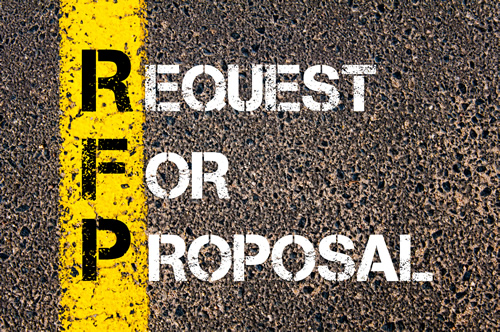Virtually every sector of our economy—the government, the military, educational institutions, venture capitalist firms and multi-national corporations—use the Request for Proposal (RFP) process at one time or another. And well they should as, on paper at least, the process would seem ideal for gathering multiple bids on a particular project or initiative, commodity or service. And indeed, within the RFP lies the key elements of what one hopes to achieve: details of the exact structure and requirements of said project or procurement as well as short- and long-term objectives. And hopefully, the offers received from an RFP are quality matches in respect to both budget and end goals.

With so many organizations and businesses relying on the RFP for their daily operations, it’s little wonder that the bidding process would trickle down into the non-profit sector, especially when it’s a non-profit seeking proposals for a web development project. However, while RFPs may work well for the aforementioned sectors, there are serious downsides to utilizing such blind solicitations.
Consider these factors before embarking on an RFP process for your non-profit’s next web development project.
- The RFP process takes time. Internally, you have to compile detailed instructions and specific parameters of what the project will entail. This may seem like a worthwhile effort, but for smaller organizations that can put a real burden on operations, and the time spent formulating the RFP may not equal the scope of the web project itself.
- Non-profits are often more fluid entities that need to adapt and evolve. And if, once you’ve chosen your winning bid, unforeseen circumstances arise you may be locked in to a contract that suddenly doesn’t provide for those new circumstances.
- The RFP process is incredibly impersonal, the equivalent of throwing a dart at a board while blindfolded: you have no idea what you’re going to hit. Remember, an RFP is just a estimate—from an unknown source—encompassing deliverables, timelines and price, and is no indication of a bidder’s ability to be responsive to your needs or whether you’ll be able to work with them effectively on what is a key element of your marketing platform.
- Once you have your RFPs in hand, more time will be spent fully vetting the top contenders for the project. You’ll need to investigate their reputations, examine their previous work and more.
Downsides notwithstanding, if your non-profit does choose to embark on an RFP process for your web development project, there are some elements to keep in mind. For one, the proposal requirements should match the project’s budget: don’t ask for a proposal that may take a potential bidder a huge amount of time to complete if the end cost of the project is relatively small. You’ll likely receive few quality bids, and indeed may not receive any at all. Likewise if the contract has a considerable payout, don’t be afraid to ask for a large and highly detailed proposal. And lastly, before you send out an RFP do some homework and get a sense of what your web project may cost. Then, as you start receiving bids, it will be easier to determine whether they’re realistic prices.
Of course if a non-profit is willing to spend the time and effort going the RFP route there is the opportunity for a good learning experience. But remember that, as previously mentioned, it’s a cold and impersonal process, and in many circumstances an unnecessary drag on operational man-hours. Many non-profits would be better served by seeking out a quality web developer—whether through word-of-mouth or by a trusted referral—with whom the organization can cultivate an effective, personal and quality relationship.
Creating Digital Destinations that Build Communities and Change Lives.
Our non-profit clients consistently tell us their biggest challenges are improving donor engagement and promoting their mission online. At Byte Technology, we understand that creating a successful online presence for non-profits isn’t a “one-size-fits-all” undertaking. By choosing the right tools for your organization, Byte Technology can help you create online strategies that foster engagement with your volunteers, patrons and donors specifically—allowing you the capability to build stronger relations with the people that matter to your organization most.
Learn more about Byte Technology’s web design services for nonprofits.


